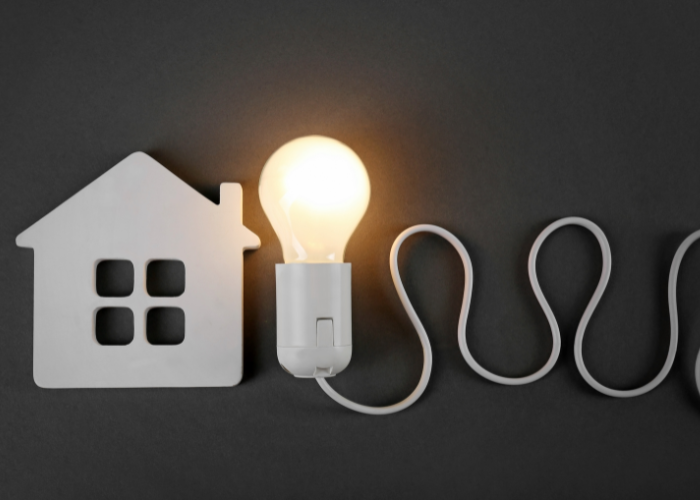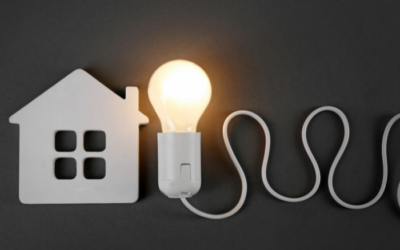Choosing and installing the right lighting can significantly transform a home’s atmosphere, making it more comfortable and aesthetically pleasing. Lighting contributes to enhancing the perceived spaciousness of a room, improving functionality, and shaping the overall mood. Below are the key principles of lighting and how to choose and install different types of lighting in a home, considering both practical and aesthetic purposes.
Fundamentals of Lighting: General Lighting
This type of lighting is intended to illuminate the room evenly. It serves as the primary lighting layer upon which other layers are built. General lighting can include ceiling chandeliers, large lamps, or ambient lighting elements that cover the entire room surface.
Task Lighting
Task lighting is designed for specific activities. For example, when reading, writing, working, or cooking, task lighting provides the necessary light in the area where the activity takes place.
Accent Lighting
Accent lighting is used to draw attention to specific elements or corners of a room. For example, lights placed over paintings, plants, or decorative objects help highlight these features.
Aesthetic Lighting
Aesthetic lighting mainly serves a decorative purpose. It’s used to create a specific atmosphere and can include light layers that establish a certain mood.
Layered Lighting
Layered lighting combines the aforementioned types to create a multi-dimensional and pleasant environment.
Lighting by Room Type
Each room has its own needs and requires different lighting solutions. Here are suggestions for lighting different rooms in a home:
Living Room
The living room is usually where the family gathers, relaxes, or receives guests. Lighting here should be layered to allow for both relaxation and social interaction.
- General Lighting – The main light should be bright enough to illuminate the entire room. Ceiling chandeliers, large lamps, or built-in lighting systems, especially when centrally placed, can be effective.
- Task Lighting – If there are reading or work areas in the living room, special lamps should be directed toward those spaces. Standing or adjustable lamps are ideal for reading comfort.
- Accent Lighting – Use spotlights to highlight artwork or decorative elements. Floor or wall-mounted lights can create interesting shadows and depth.
- Aesthetic Lighting – Add small or colored lights to give the space a unique ambiance.
Kitchen
Proper lighting in the kitchen is crucial to ensure safety and comfort during food preparation.
- General Lighting – Ceiling lights or lighting systems should be placed to ensure the entire kitchen is well-lit.
- Task Lighting – Work zones like cutting areas or cooking spaces need focused lighting. Under-cabinet lights or strip lighting are great options for visibility.
- Aesthetic Elements – Add decorative lights, such as cabinet lights or color-changing lights, to enhance the dining area’s atmosphere.
Bedroom
The bedroom should convey a sense of calm and comfort, so its lighting must be soft.
- General Lighting – The main bedroom lighting should be gentle. This could include cabinet lights or decorative lamps that promote relaxation.
- Task Lighting – Bedside lamps or nightlights are ideal for reading or relaxing. You can also use lights controlled by remotes or smart systems for convenience.
- Accent Lighting – Wall-mounted lights above the bed can highlight decorative items like artwork or wall designs.
Bathroom
The bathroom requires both general and task lighting, especially around mirrors.
- General Lighting – Ceiling lighting is often sufficient to illuminate the whole bathroom.
- Task Lighting – Lights around the mirror help with grooming and hygiene routines.
Children’s Room
Lighting in a child’s room should be both comfortable and safe. Thematic lighting can spark interest and imagination.
- General Lighting – Ceiling lights provide overall illumination.
- Task Lighting – Lamps for reading or playing should provide adequate brightness and be safely positioned.
Practical Tips for Choosing Lighting
- Color Temperature – The right color temperature sets the mood of a space. Warm lights (2700–3000 Kelvin) are ideal for bedrooms and living rooms, while cool lights (4000–5000 Kelvin) are more suitable for kitchens and bathrooms.
- Light Intensity – High-intensity lighting works well in kitchens and bathrooms where visibility is key, while softer lighting is better for bedrooms and living rooms.
- Energy-Efficient Lighting – Use energy-saving lights to reduce electricity costs and environmental impact.
- Accent Light Direction – With accent lighting, the direction is crucial. Aim the light toward the decorative elements for best effect.
Installation Tips for Lighting
- Layered Lighting – Combining ceiling lights, reading lamps, and accent lights can make a room both functional and atmospheric.
- Lighting Height – Choose appropriate heights based on light type. For instance, pendant lights over dining tables should be 70–90 cm above the surface, and reading lamps should be lower for better focus.
- Light Direction – Direct light properly to avoid glare. Task lighting should face work areas, while accent lights should target decor items.
Lighting plays a vital role in a home’s interior, providing both functionality and aesthetic value. By carefully selecting and installing lighting, you can create a personalized and comfortable atmosphere in every room.
A layered approach, proper color temperature, and light intensity adjustment allow for diverse moods, while energy-efficient solutions help make the most of your electricity usage.






